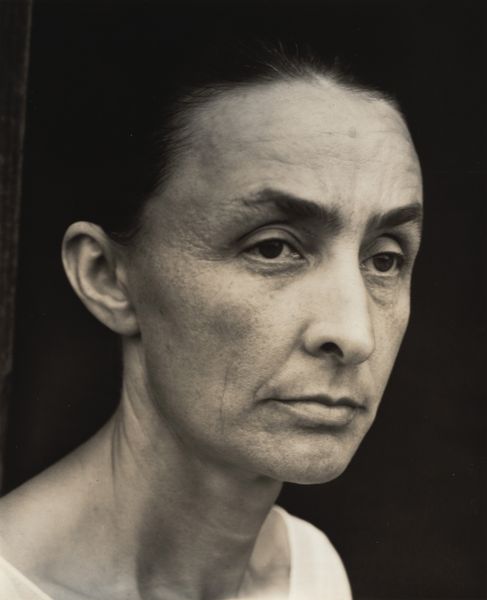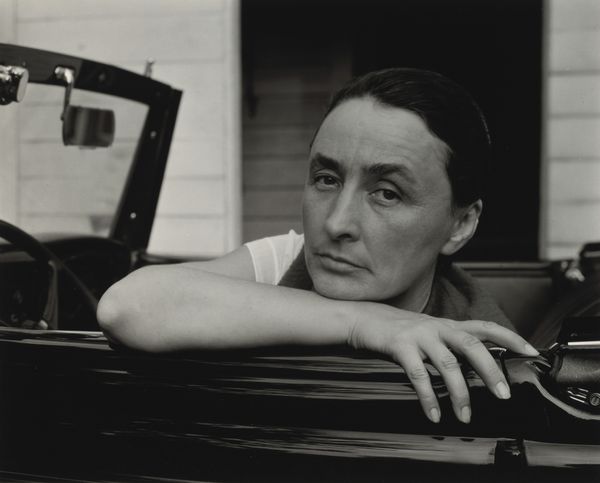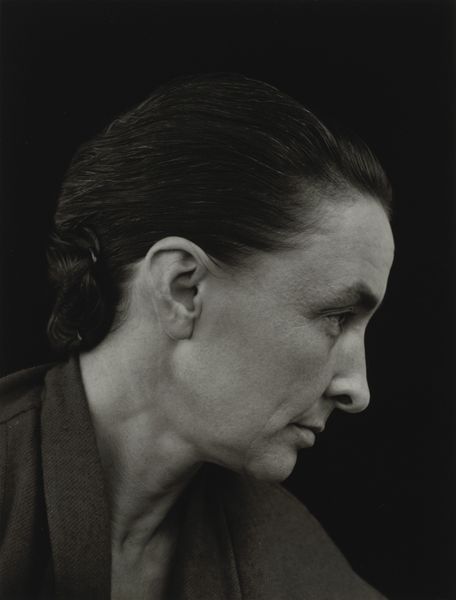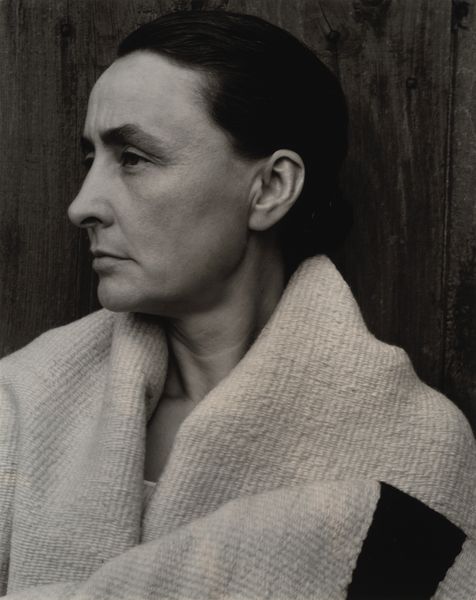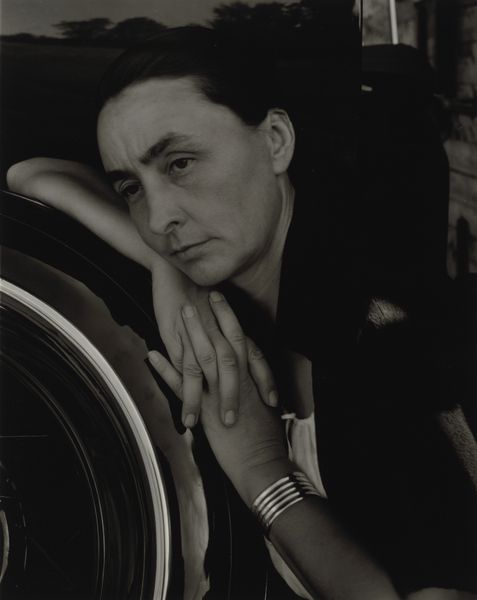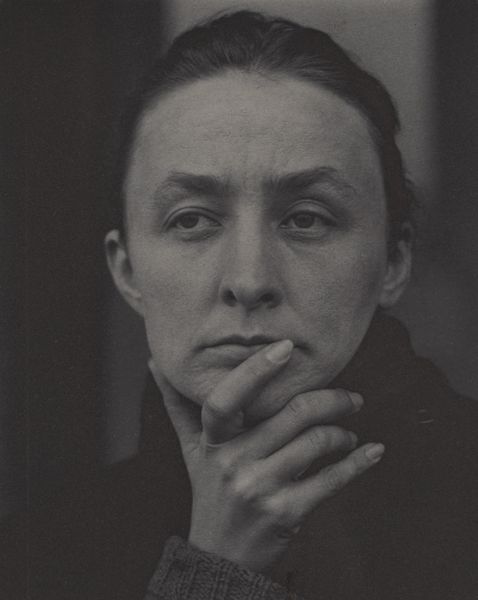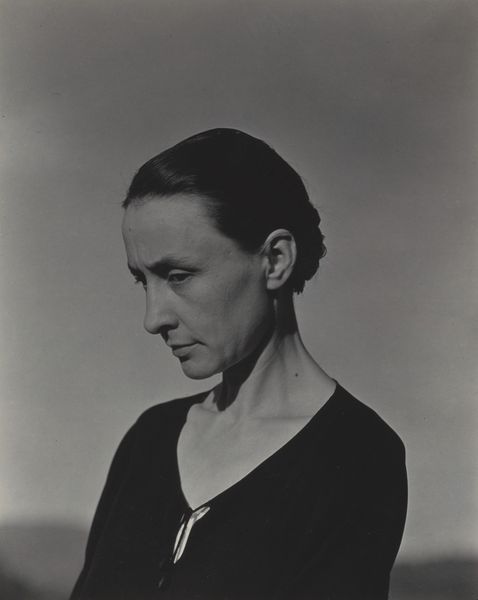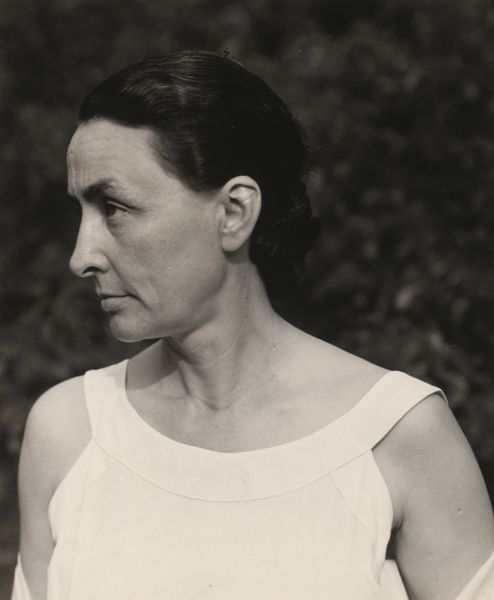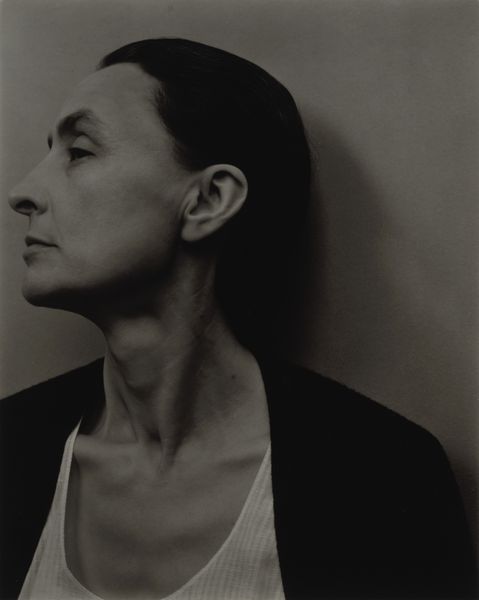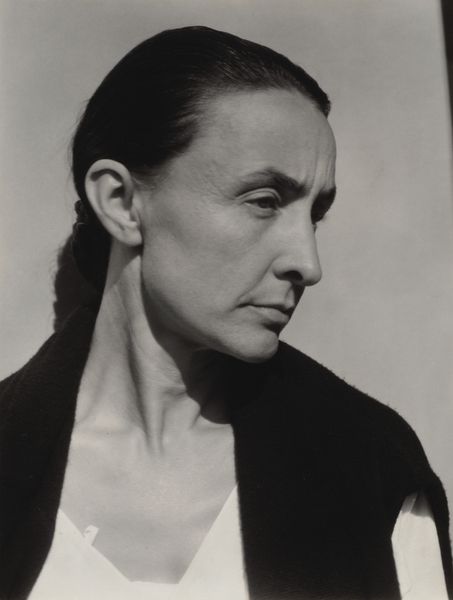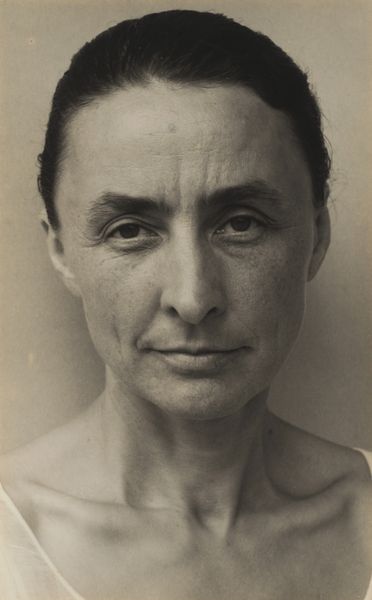
photography, gelatin-silver-print
#
portrait
#
self-portrait
#
portrait
#
photography
#
gelatin-silver-print
#
modernism
Dimensions: sheet (trimmed to image): 24 x 19 cm (9 7/16 x 7 1/2 in.) mount: 56.8 x 43.1 cm (22 3/8 x 16 15/16 in.)
Copyright: National Gallery of Art: CC0 1.0
Editor: Here we have Alfred Stieglitz's gelatin-silver print, "Georgia O'Keeffe," from 1932. It's a striking portrait, almost confrontational in its simplicity. What do you make of this work? Curator: I see here a clear statement on the politics of representation and labor. Stieglitz's focus on O'Keeffe's body and, more specifically, the means by which it's presented, opens a dialogue about the commodification of the artistic persona. Consider the gelatin-silver print itself – a mass-reproducible medium. It democratizes the image, making it available for consumption, but it also risks stripping away the artist's aura, don’t you think? Editor: I see what you mean. The photograph being a multiple destabilizes the art object itself. What I’m wondering, though, is if the intimacy displayed is also destabilizing established norms. Curator: Precisely. Stieglitz challenges the high art/low art divide by employing photography, a medium associated with both artistic expression and documentation. He elevates O'Keeffe, but simultaneously, the photographic process brings her into the realm of mass culture. How does the portrait’s lack of adornment affect your perception? Editor: I notice her arms framing her head like a halo. It’s definitely less about embellishment, and more about raw exposure. It invites the viewer to observe, consider the labor and life etched into her features. Curator: Absolutely, and remember this was made during the Depression Era, adding weight to discussions on the value of work and artistic labor in American culture. The means of production—both O'Keeffe's artistic labor and the mechanics of Stieglitz’s photograph—are inherently political acts. Editor: That is powerful! I never considered the labor aspect so directly. It makes me reconsider my initial reaction and see it more in context with the economic times. Curator: Indeed, and thinking materially allows us to view the image not just as a portrait, but as a cultural object deeply enmeshed in the social fabric of its time.
Comments
No comments
Be the first to comment and join the conversation on the ultimate creative platform.



